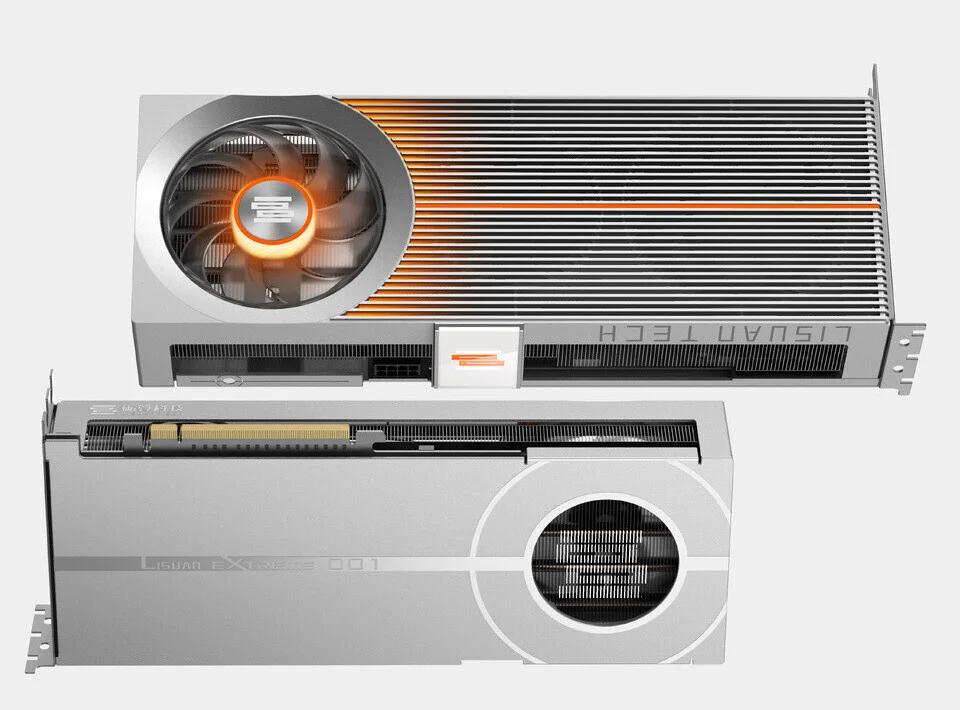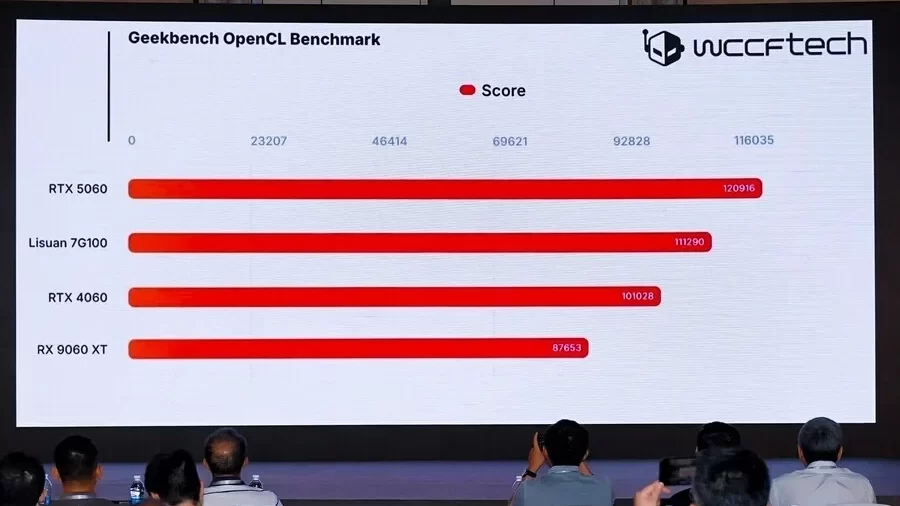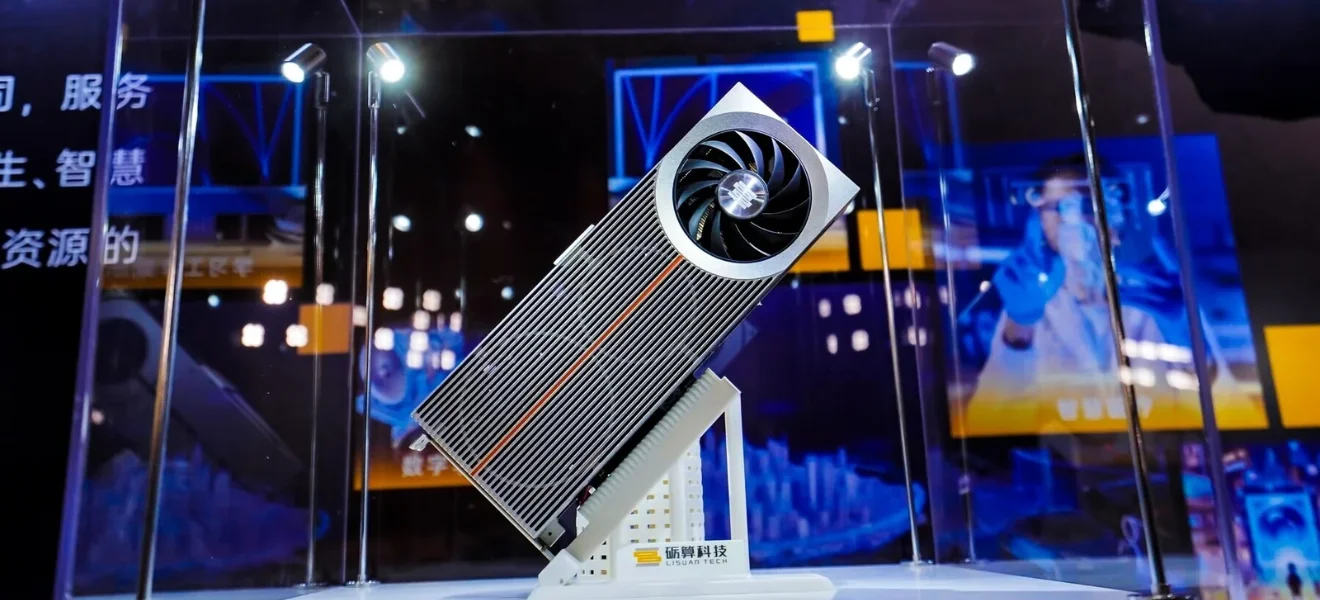Technological independence is no longer just a long-term goal for China. With the arrival of new graphics cards from Lisuan Tech comes real proof that China is starting to stand on its own two feet in the field of high-performance graphics cards. The company has unveiled two new Lisuan Tech cards, the 7G106 and 7G105, which are not just an attempt to compete, but realistically reach for NVIDIA’s mid-range products in terms of performance. What’s more, these are solutions built on a proprietary architecture, with support for modern APIs and enough performance to play at 4K resolution.
These cards represent not only a technological shift, but also a symbol of political independence. After years of restrictions and sanctions against Chinese tech companies, the answer now comes in the form of a chip that can handle the most demanding gaming titles while also offering features for the cloud, AI or data centers.
Performance from the home workshop

Underpinning both cards is the TrueGPU architecture and the G100 chip, which is manufactured on TSMC’s 6nm process. This makes them the first ever Chinese GPUs designed entirely in-house in China, from the instruction set to the architecture and software itself. This combination shows that Lisuan Tech is not content with simply copying existing solutions, but has chosen the path of its own innovation, and we will be following every single step of the Lisuan Tech 7G106 graphics card in detail.
The TrueGPU architecture is designed to be efficient and scalable. It incorporates several advanced technologies such as dynamic load sharing, block memory structures that save VRAM capacity, and even a proprietary NRSS upscaling algorithm to compete with technologies such as NVIDIA’s DLSS or AMD’s FSR. The result is supposed to be higher performance even at lower clock speeds, without unnecessary power waste.
Specifications that will surprise
Chinese manufacturer Lisuan has introduced two new graphics cards. The Lisuan Tech 7G106 is aimed at gamers, the second Lisuan Tech 7G105 at professional AI and data center deployments . Let’s take a look at their key specifications.
Lisuan Tech 7G106 12 GB – Gaming Graphics Card
| Lisuan Tech 7G106 12 GB – Gaming Graphics Card Technical Specifications | |
|---|---|
| GPU chip | 7G106 |
| Memory | 12 GB GDDR6 |
| Memory bus | 192-bit |
| Computing power (FP32) | 24 TFLOPS |
| Texturing Units | 192 |
| ROP units | 96 |
| Power | 1 x 8-pin |
| Interface | PCIe 4.0 x 16 |
| Outputs | 4 x DisplayPort 1.4a |
| Technology | DirectX 12 (no ray-tracing) | Vulkan 1.3, OpenGL 4.6 | OpenCL 3.0 |
| Video codecs | HEVC 8K @ 60 fps | AV1 8K @ 30 fps |
| Display support | 8K @ 60 Hz HDR | FreeSync, DSC |
Lisuan Tech 7G105 – Professional card for AI and cloud
| Technical Specifications Lisuan Tech 7G105 24 Gb GDDR6 | |
|---|---|
| GPU chip | 7G105 |
| Memory | 24 GB GDDR6 with ECC support |
| Memory bus | 192-bit |
| Computing power (FP32) | 24 TFLOPS |
| Texturing Units | 192 |
| ROP units | 96 |
| Power | 1 x 8-pin |
| Interface | PCIe 4.0 x 16 |
| Outputs | 4 x DisplayPort 1.4a | option to connect up to 16× 1080p @ 60 Hz via MST hubs |
| Technology | DirectX 12, Vulkan 1.3, | OpenGL 4.6 | OpenCL 3.0 |
| Video codecs | AV1 (encode 4K@30fps) | HEVC encode 8K@30fps | AV1/HEVC decode up to 8K@60fps |
| TDP | 225 Kw |
| Bandwidth | 384 GB/s |
Both cards show that Lisuan is serious about the graphics market, as one card targets gamers, the other targets data centers. Support for modern video codecs and a wide range of APIs will also be of interest.

RTX 4060-level performance?
What would a card be without proper benchmarks? The Lisuan Tech 7G106 showed its strength in several synthetic tests. It scored 26,800 points in 3DMark Fire Strike. For comparison, the GeForce RTX 4060 scores around 28,500 points. This means that the difference is minimal and the card from Lisuan can actually compete with the mid-range from NVIDIA.

In the more recent 3DMark Steel Nomad test, the Lisuan Tech 7G106 scored 2,256 points, again placing it alongside the RTX 4060. Oh, and in Geekbench 6 with OpenCL, the card scored 111,290 points, which is about 10% higher than the RTX 4060. In this test, it is only bested by the RTX 5060, which is still only a short time on the market though.
This performance isn’t just about the numbers. The Chinese manufacturer also showed off their graphics card in practice right on stage where, they demonstrated how the Lisuan Tech 7G106 card handles modern AAA games. Black Myth: Wukong, a challenging title that is often used as a showcase benchmark, ran at 4K resolution at high settings above 70 FPS. Wuchang: Fallen Feathers and Shadow of the Tomb Raider achieved similarly high frame rates, all above the 70 to 80 FPS threshold. No DLSS, No Tricks. Pure chip performance.
Reality and limitations
While the results are impressive, there are limits to note. Ray-tracing is not supported, meaning the card may not be an ideal choice for future titles that increasingly rely on this technology. Another challenge is drivers, with a new architecture there is always the question of how well it will work with games, operating systems or professional software.
Also missing is information on price. Without it, it’s hard to gauge whether the card can really compete with well-known brands or will just stay within the Chinese market.
Well, therein lies another key aspect of this development, as it is a product created for the domestic market. In recent years, China has aimed to reduce its dependence on Western technology, especially in sensitive areas such as chips, artificial intelligence or cloud computing. And if the Lisuan Tech 7G106 goes into mass production and offers stability, performance and a reasonable price, it could very well succeed in East Asia at least.
The future of Chinese hardware
The Lisuan Tech 7G106 and 7G105 are not just new graphics cards. They show that China no longer just wants to copy and license, but wants to innovate. And if the company can master driver optimization, expand software support, and open distribution outside of China, it could become a new competitor in the global market.
The first card samples will reach manufacturers in August 2025, with mass production expected to start in September. If all goes well, we could see the first devices with chips from Lisuan Tech as early as the end of the year.
This is good news for gamers. More competition means better prices, a wider choice, and maybe even new innovations that have so far only been born in the labs of NVIDIA or AMD. But now it seems that a new player from the East is entering the gaming scene with the Lisuan Tech 7G106 graphics card.
